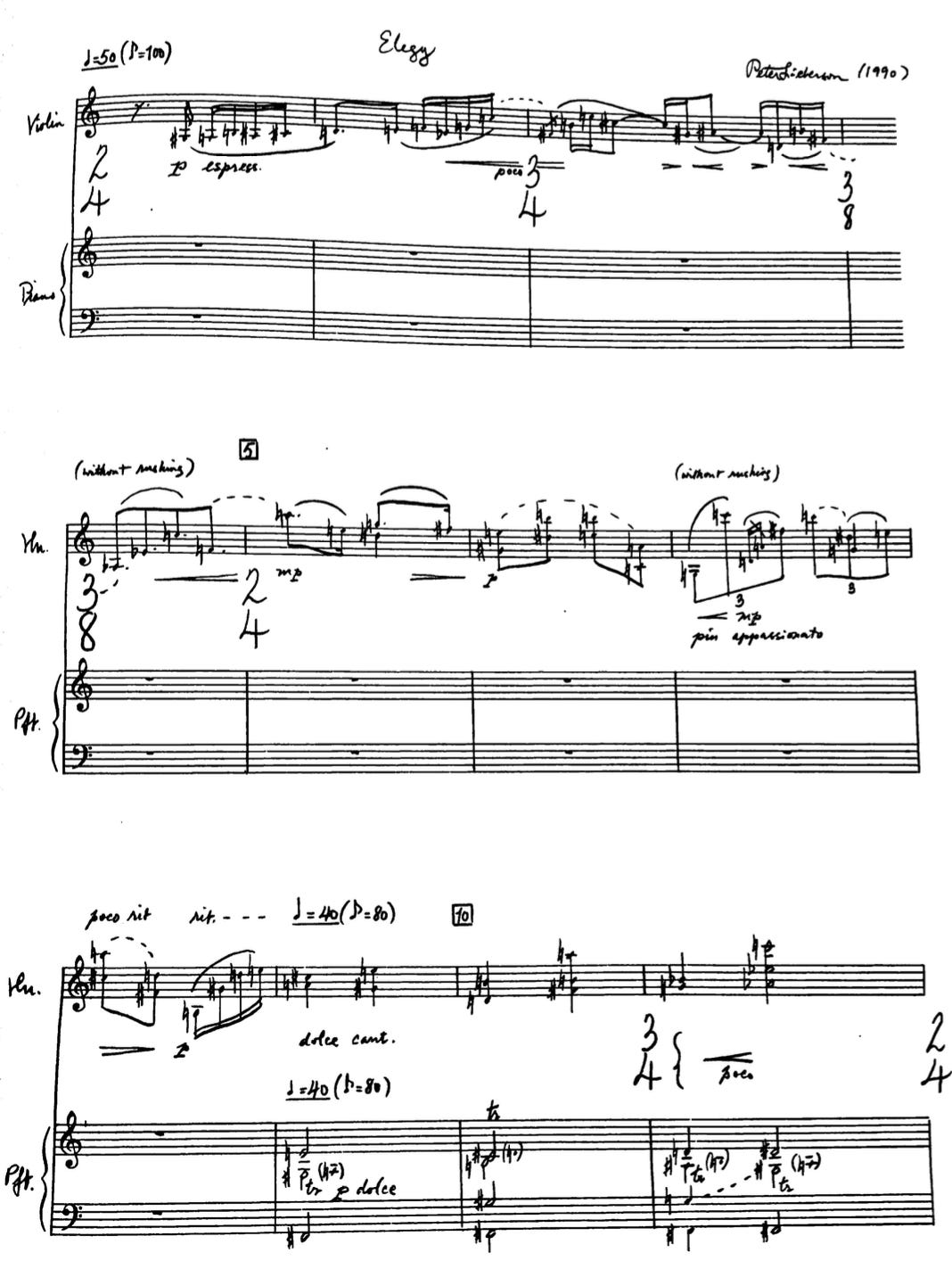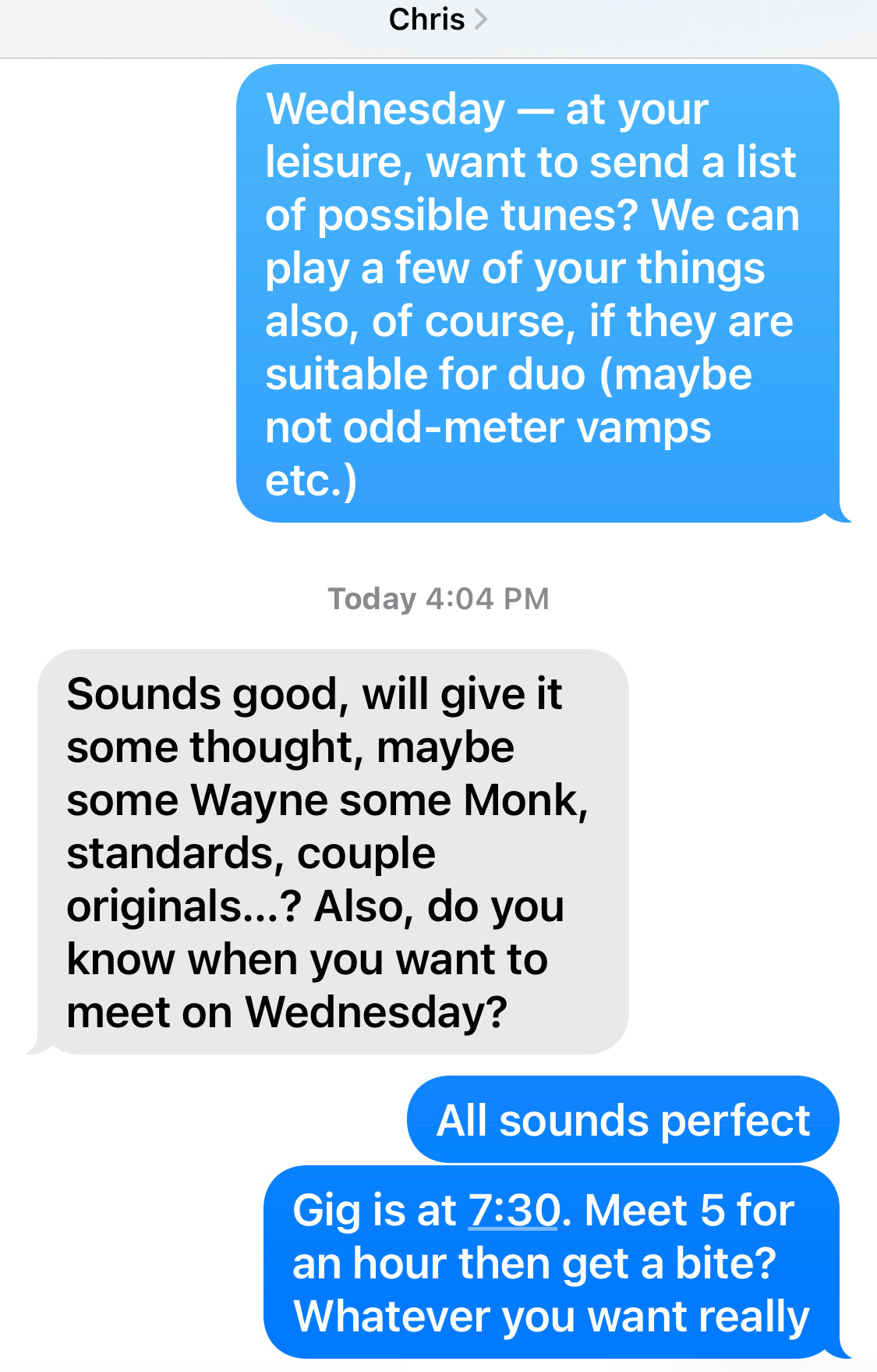There’s have been two nice pieces of preview for Sono Fest!
Together, the opening concerts with Miranda Cuckson and Chris Potter offer my manifesto for American concert music. For our best future, we need to broaden our tent and really understand both notation and folklore.
Louise Talma Violin Sonata
Peter Lieberson Elegy
George Walker Violin Sonata no. 1
Midcentury American composers studied traditional European composition and counterpoint, drank from Nadia Boulanger’s well of Stravinsky-isms, and combined that European base with something of ragtime, folk dance, and other so-called American vernacular idioms.
Louise Talma and George Walker wrote some of my favorite notated piano music of the 50’s. (More here.)
I was also briefly in their powerful auras in real life:
My first job in classical music was with the Gregg Smith Singers, where I plunked out the notes to Talma’s a cappella A Wreath of Blessings in rehearsal. I hardly knew anything about nothin’— but I liked this off-key diatonicism, which in time I would learn was firmly in the Stravinsky tradition, albeit with an American rhythmic accent. After the concert, I told her I had just found a copy of her Six Etudes for Piano. Louise Talma cackled with delight and bragged, “Those are the hardest things I ever wrote.”
While I didn’t meet George Walker in person, I did conduct a substantial interview via email. The Walker autobiography Reminiscences of an American Composer and Pianist is highly recommended.
Peter Lieberson was born too late to be considered a midcentury composer, but he upheld the tradition in wonderful style. I met Lieberson as well; that anecdote opens my overview of his work, “Peter Lieberson on Record.”
Miranda Cuckson and I are playing three really great pieces by Walker, Talma, and Lieberson at the Soapbox Gallery. Just fantastic music. The Walker is straight-up weighty neoclassic fire, the Talma is episodic and amusing with a strong rhythmic profile (it was a gift for Nadia Boulanger on the occasion of her 75th birthday), the Lieberson offers rich romance.
While both of the Walker and Talma feature American rhythmic syncopation, the Lieberson has his signature “jazzy” harmony. I believe Lieberson generated those chords though some kind of 12-tone matrix; indeed the first solo violin melody of Elegy seems not far from a tone-row. It is Lieberson’s special magic to create such luscious sonorities out of such intellectual material, an alchemy he undoubtedly learned from Alban Berg. (The first piano chord is known in jazz as an F# minor 9th.)
These piano parts are taxing, pushing me to the limits of my abilities. Thankfully, I’ve kept practicing: the chain trills in the Lieberson are possible for me in a way they wouldn’t have been even a few years ago.
It’s not every day I’m playing difficult chamber music. Part of the challenge is simply feeling comfortable in ensemble. Both the Talma and the Walker have very independent parts, full of mixed meter and hidden downbeats.
To help me learn the violin lines, I made little sketches in my Dorico notation program. I normally practice this way with headphones, so it’s not usually quite as hard as what I’m demonstrating in these silly little videos, where I play delicately with the soft pedal down, trying to hear the fake violin coming out my laptop’s speakers…
A minute of the Talma:
A minute of the Walker:
On social media, I’m calling these excerpts #MusicMinusMiranda. (Sincere thanks to Miranda Cuckson for playing these pieces with me; I doubt her usual elite piano partners need to do this kind of drudgery in order to nail this kind of repertoire.) On Thursday, Miranda will take charge with a solo recital for Sono Fest!
To complete the program on Tuesday, I am playing my Piano Sonata, in three movements, structurally modeled on a classical sonata like Haydn, Mozart, or Beethoven, yet basically sounding like whatever I play on a jazz gig. It will be on my next release: the first piano sonata on Blue Note records.
Chris Potter and I were both at the same Jamey Aebersold jazz camp in Elmhurst, Illinois in something like 1989 or ‘90. Even back then, everyone was already saying that he was great, and Potter has certainly lived up to his promise since. In fact, Chris Potter sounds better every year. He’s a worker and a thinker, and one of the nicest superstars one could ever meet.
Yesterday I texted Chris to see what he wanted to do.













Escoffery?
No.
But I am the only guy who can describe sneaking into a Steve Lacy concert last night at Stanford, who was hoping for some Monk.